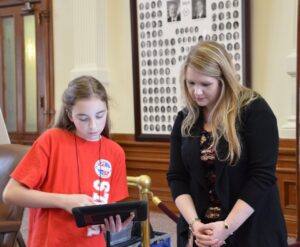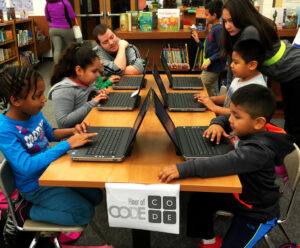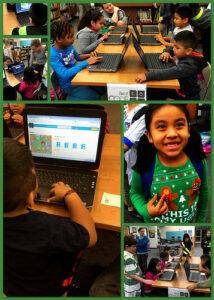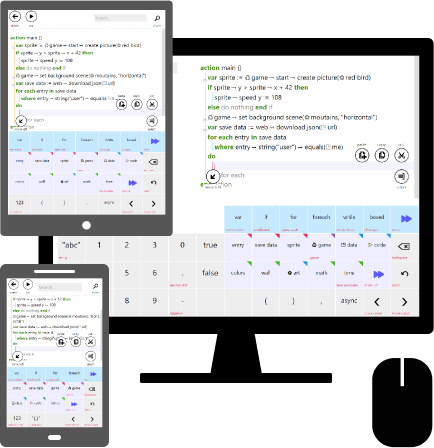I have a lot of great resources and ideas for you this time, probably more than I normally do. Maybe it’s because it’s the holidays and everyone has the spirit of giving! So enjoy these tips and tricks. And be sure to check out the others in the series.
Holiday Resources
If you have a classroom elf on the shelf, you may want to register at the Teacher Resource Center and receive their emails with elf lesson plans and holiday-themed activity sheets. This site is best for those who teach grades K-5.
Ditch That Textbook is providing four free digital breakout room activities that have a holiday theme. (If you aren’t familiar with digital breakouts, check out what they are and how best to run one here.)
For elementary students who are all about the Gingerbread Man, you can find a fabulous collection in Wakelet of gingerbread-themed books, songs, and games here. And Sarah Kiefer provides another Wakelet collection filled with winter holiday resources.
If you need a great holiday scavenger hunt for your staff, take a look at this creative approach from Fort Sam Houston ISD that uses GooseChase. Tasks include such holiday delights as trivia questions, putting as many candy canes on a teammate’s face as you can, caroling together, wearing matching Christmas pajamas, and more. You have full permission from FSHISD to copy the game and make it your own.
For more ways to celebrate the holidays, check out these 29 different Christmas games to amuse your students, family, and friends. Some of them have a small price and some of them will also work virtually. (My favorite is the Santa Hat Stacking game which is free except for the cost of the red plastic cups needed.)
Create your own holiday bingo games that can be printed our or played virtually at Bingo Baker. Add your own graphics to create your own game or use one of the ones already created. This site is completely free. But if you want even more features, you can purchase a lifetime membership for just $24.95, a bargain, in my opinion.
The fabulous Eric Curts offers a fun activity where you decorate a Christmas tree using Google Slides. All of the information you need is included in his blog, along with the template that you can copy.
Finally, if the stress of the holidays is getting you down, be sure to take a look at these Honest Holiday Cards for Teachers. As they say on their website, “This year the standard Hallmark greeting just isn’t cutting it.” I’ve included one of my favorites below.
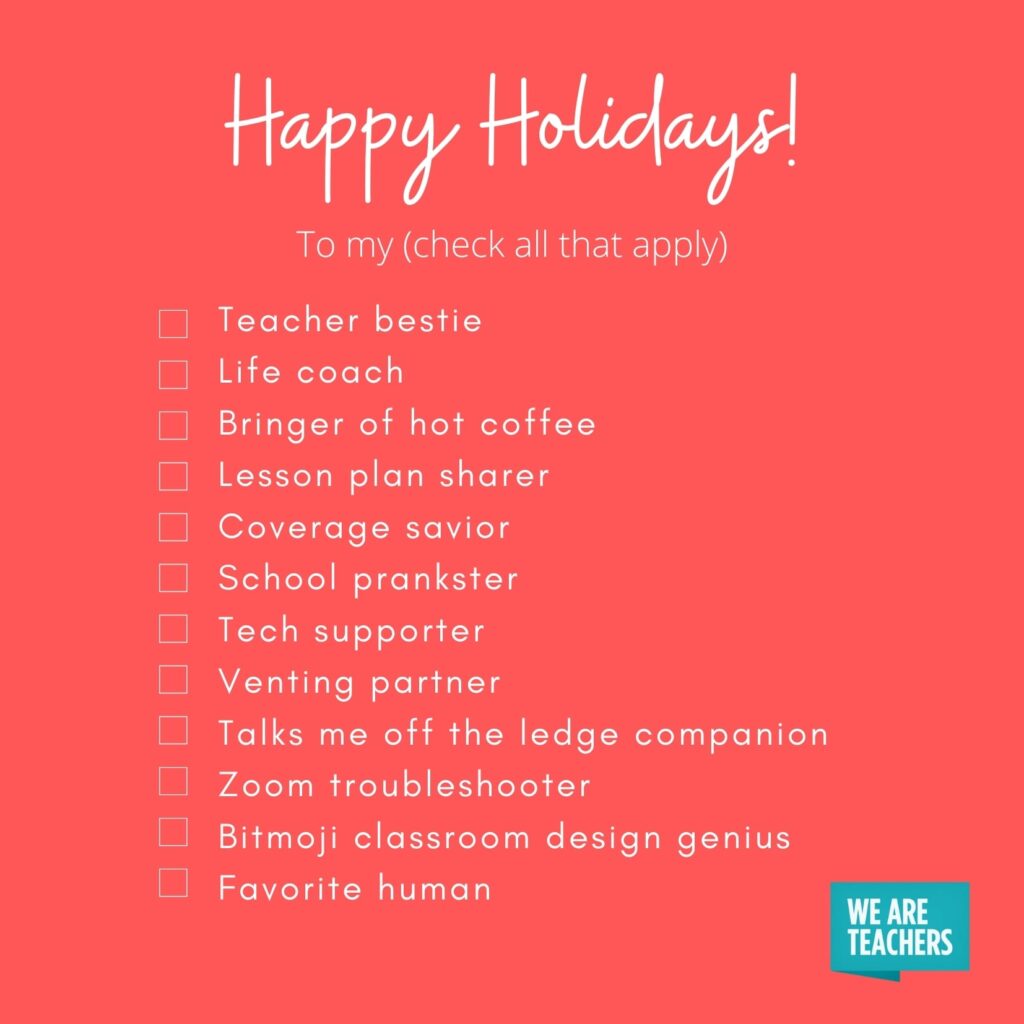
Hour of Code Choice Board and More
If you’ll be helping your students take part in the Hour of Code activities this year (or any time), take a look at this choice board of activities for secondary students (grades 6-12). It includes five different categories of activities with several choices for each one. Each choice is linked to the corresponding resource, so you can share this directly with your students or make a copy of it for yourself if you want to add items to it.
The District School Board of Niagara has created a fabulous Hour of Code resource booklet for grades 1-8. It is a “curated collection of computational thinking activities with technology and unplugged resources for each grade.” All of the resources are linked to where you or your students can easily access them.
Finding Alternatives
This one is an oldie goldie, but it’s good be reminded that it’s there. If you are looking for an alternative to a piece of software that you can’t quite afford or to a website or tool that has gone away, use AlternativeTo. This site uses crowd sourcing to find alternatives to all of the most popular resources that we use in our digital lives. Just type in the name of the product that you need to replace and lots of ideas pop up. You can even filter the ideas by device/operating system. This is a powerful way to find free resources for your students to use at school or at home.
Create Your Own Rebus Activities
Solving a rebus puzzle can be a great learning activity for students of any age. Because it uses non-linguistic representation of familiar things, it is one of the high-effect-size strategies. And it can help with spelling and vocabulary skills as well. You can create your own rebus at this free website. The site will let you choose between using their own images or emoji characters. You can also turn on the ability for hints about some of the drawings to be shown. Below is one I created for you to solve.
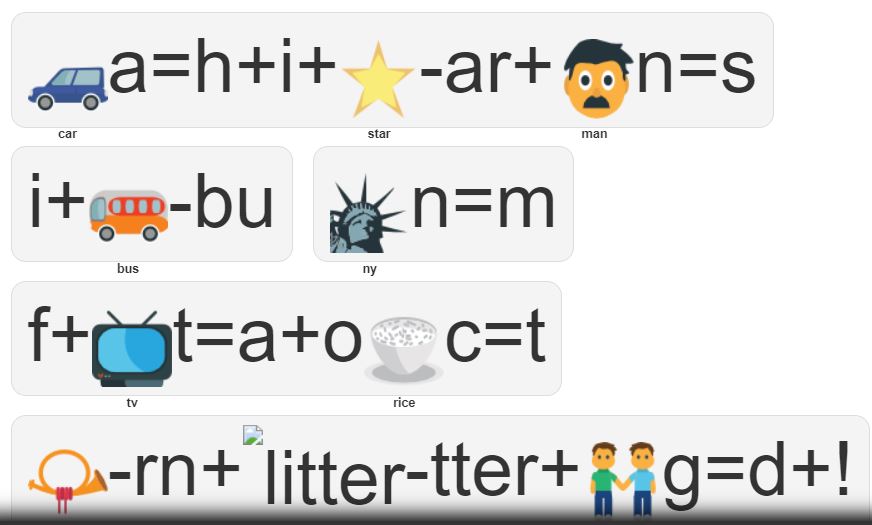
Scientific Modeling Simulation
Lost at the Forever Mine is a fabulous, free, online game for students in grades 5-9 to learn about scientific modeling. “Students will set up equations, work with graphs, input data, and use models to make predictions. Along the way, as obstacles keep popping up, students will experience how models are used as a tool to make decisions.” The game takes 25 to 35 minutes to play, so it can be done in one class period. And no registration or log in is required. Since you can play it from any web browser (although they recommend Chrome), it will work fine on any device.
More Free Graphics for Students to Use
Tony Vincent shared Undraw.co, which is another good resource for clip art. The graphics are probably of most value to secondary students and adults, although they are appropriate for any age. You can even change the color of each image to fit whatever theme you have going. As Tony said, “Enter a hex color code at the top, and that color will be used in the image! All images are open source, so you can use them freely.”
Would You Rather…
Dr. Kristen Mattson is graciously sharing her 50 Would You Rather questions for download. Just enter in your email address and you’ll receive the fun prompts as both printed cards and full images. If you haven’t done this activity before, Would You Rather is a great conversation starter and a wonderful way to get to know your students better. I’ve even used the activity with the TCEA staff and they loved it!
Add Sounds to That Virtual Meeting or Class
If you want to help keep your audience involved during your next meeting or class, try using some of the fun sounds on this soundboard. There are 15 to choose from and they include a laugh track, the trumpet call that starts a race, people saying “ohhhhhhh,” and more. The sounds laugh only about three or four seconds.

News Podcast for Kids
KidNuz is a wonderfully refreshing daily podcast (Monday through Friday) for students whose purpose is to deliver “current events in a kid-friendly package, spark curiosity, and get them asking critical questions.”
Chromebook Extensions
Be sure to check out these extensions to help you better manage your Chromebook. There are 13 of them and they include things like a URL shortener, a floor planner, a video maker, and more.
Virtual Field Trip Passport Template
And finally, if you are encouraging your students to take advantage of the multitude of free virtual field trips that are available now, here is a cool passport template in Google Slides or PowerPoint that they can use to keep track of where they have “visited.” (And if you aren’t aware of some of the amazing trips that are available, check out this blog, this one, and this one.)

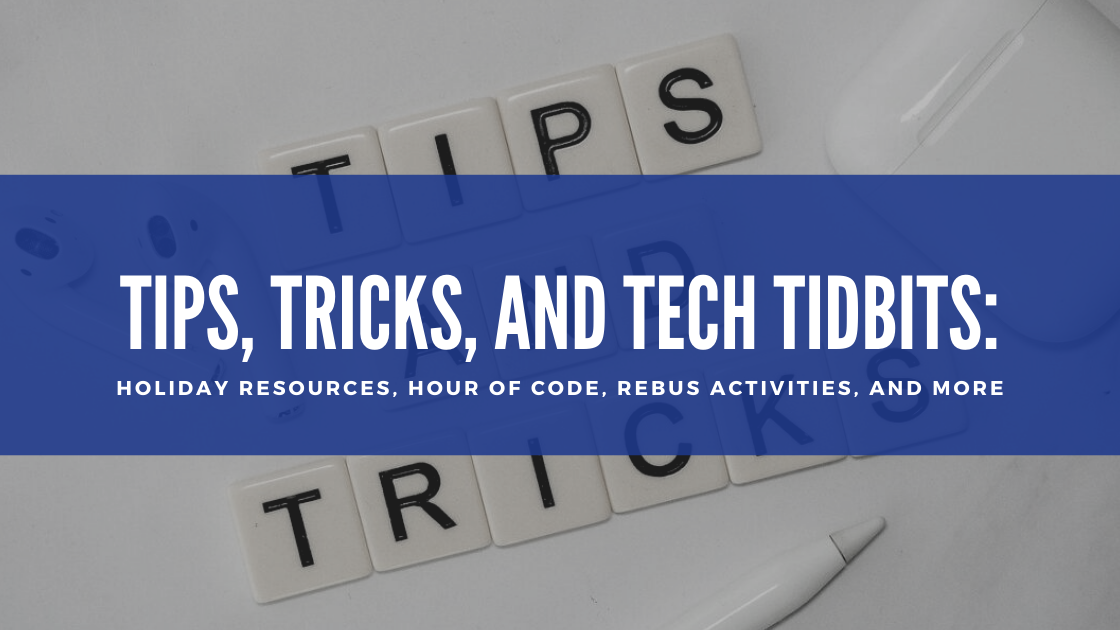
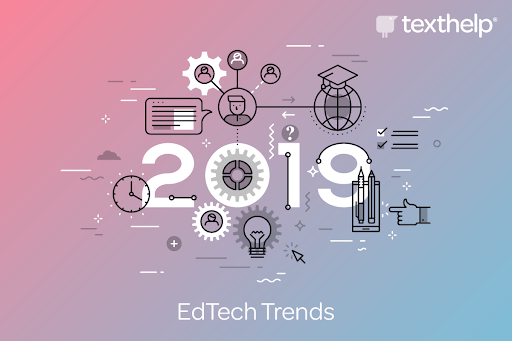
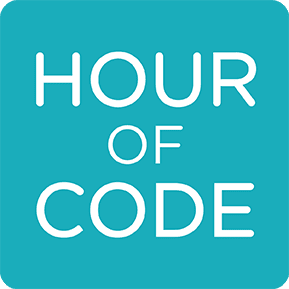
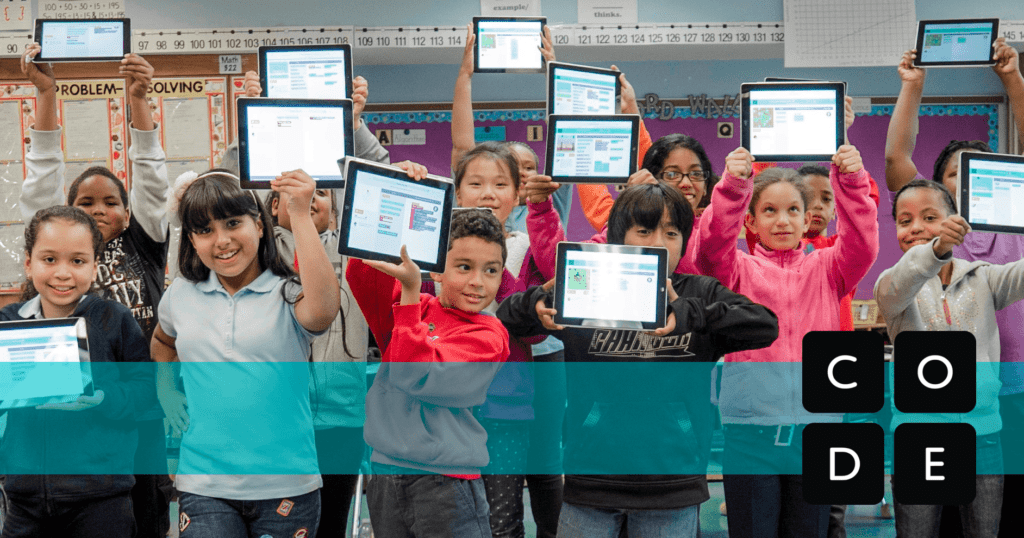
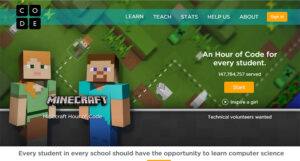 activities are self-guided so you don’t have to know how. You can learn to code at the same time as your participants! All you have to do is select a
activities are self-guided so you don’t have to know how. You can learn to code at the same time as your participants! All you have to do is select a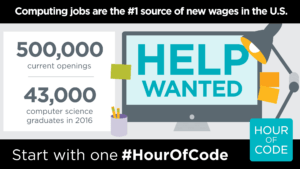 Now that you are all jazzed about hosting an Hour of Code, you want to make sure others know about it. Hour of Code has all types of
Now that you are all jazzed about hosting an Hour of Code, you want to make sure others know about it. Hour of Code has all types of 

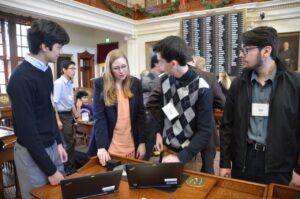 House of Representatives. Students from Richardson, San Antonio, Austin, Pflugerville, Spring Branch, Leander, Hays County, and Lufkin came to the Capitol to demonstrate the different ways students gain coding experience in their elementary, middle, and high schools. They also came to teach state legislators and their staff members how to write their first line of code.
House of Representatives. Students from Richardson, San Antonio, Austin, Pflugerville, Spring Branch, Leander, Hays County, and Lufkin came to the Capitol to demonstrate the different ways students gain coding experience in their elementary, middle, and high schools. They also came to teach state legislators and their staff members how to write their first line of code. 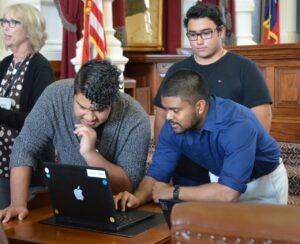 The
The 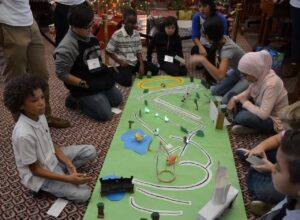 students and listened to some San Antonio elementary students read a story they wrote, as their pre-programmed robots acted out the plot line. In fact, there were a variety of different robots roaming about the floor of the chamber, including: Lego, Sphero, Dot and Dash, Makeblock, Mircobits, and Ozobots. One of the participant’s favorite activities was test driving the code written for a virtual reality experience by the Richardson ISD high school students.
students and listened to some San Antonio elementary students read a story they wrote, as their pre-programmed robots acted out the plot line. In fact, there were a variety of different robots roaming about the floor of the chamber, including: Lego, Sphero, Dot and Dash, Makeblock, Mircobits, and Ozobots. One of the participant’s favorite activities was test driving the code written for a virtual reality experience by the Richardson ISD high school students. 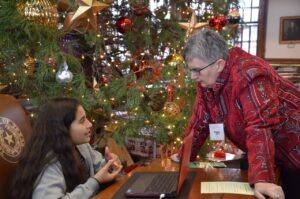 The students also got to hear what it takes to work at Facebook, Google, and Uber. Representatives from these companies spoke to the students over pizza and soft drinks. They highlighted the benefits of working in the tech industry and what it takes to land a job at one of these three companies. It won’t be long before these students will be polishing their resumes and knocking on their doors. The likelihood of these students getting jobs is strong since there are currently over 40,000 unfilled high-tech jobs in Texas. And yet, only 3 percent of high school students took a computer science course last school year.
The students also got to hear what it takes to work at Facebook, Google, and Uber. Representatives from these companies spoke to the students over pizza and soft drinks. They highlighted the benefits of working in the tech industry and what it takes to land a job at one of these three companies. It won’t be long before these students will be polishing their resumes and knocking on their doors. The likelihood of these students getting jobs is strong since there are currently over 40,000 unfilled high-tech jobs in Texas. And yet, only 3 percent of high school students took a computer science course last school year.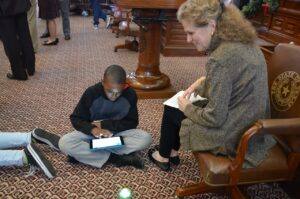 This is why this day was so important. Educating policy makers on the benefits of computer science is critical to enacting policies that can effectively change the dismal statistics. Some of the strategies to increase the opportunities for students to gain computer science skills are:
This is why this day was so important. Educating policy makers on the benefits of computer science is critical to enacting policies that can effectively change the dismal statistics. Some of the strategies to increase the opportunities for students to gain computer science skills are: